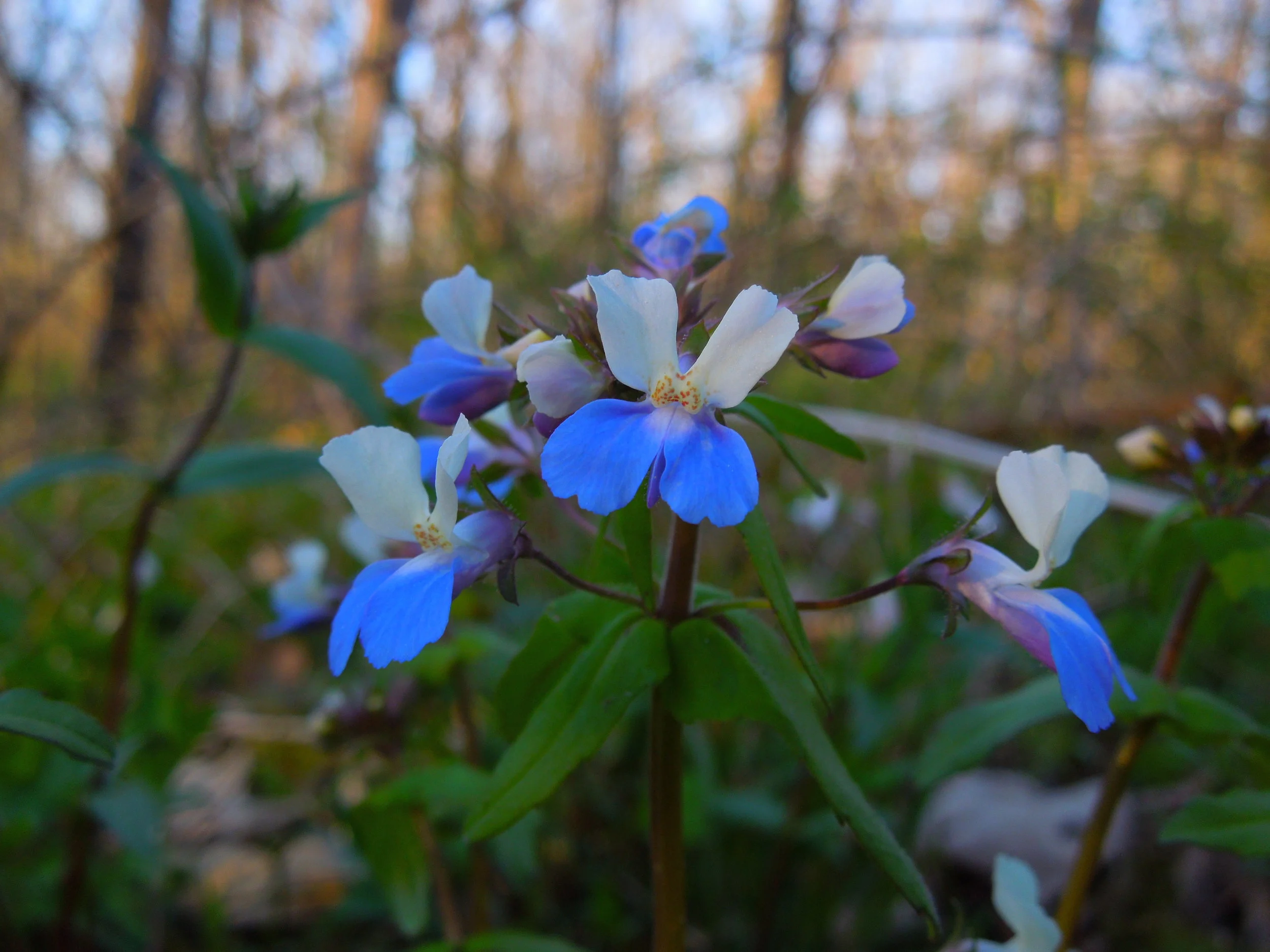One of the central tenets of evolutionary science is that individuals within a species vary, however slightly, in their form, physiology, and behavior. Without variability, life would languish, remaining static in a soupy ooze somewhere in the oceans. Perhaps it may not have evolved in the first place. Regardless, observation and experimentation has taught us a lot about how variation among individuals or populations can drive evolution. Today I would like to introduce you to a tiny plant native to northern and western North America that is teaching us a lot about how mating systems develop in plants.
Meet Collinsia parviflora, the maiden blue eyed Mary. Few plants are as iconic to my time living out west than this wonderful little plant. Indeed, C. parviflora is highly variable. It ranges in size from 5 for 40 centimeters in height and produces lovely little flowers that range from 4 to 7 millimeters in length. The size range of these flowers is key to investigating variations in pollination strategies.
C. parviflora has evolved what researchers refer to as a mixed mating strategy. Populations differ in that some plants self pollinate whereas others fully outcross with the help of a variety of bees. Exactly why these plants would maintain both strategies can tell us a lot about how mating systems develop in plants. What researchers have found is that there seems to be a tradeoff.
Populations that frequently self are often located in the harshest environments. Cold temperatures and a short growing season make investing in complex floral development a risky strategy. Indeed, plants growing where environmental conditions are harshest produce smaller flowers. These small flowers pack all of their reproductive bits close together, thus increasing the chances of self fertilization. It has been found that despite the risk of inbreeding, these plants produce far more seeds than plants that produce larger flowers and experience high rates of insect pollination.
The reasons for this are quite complex and more work is needed to be certain but it would seem that this is all an evolutionary adaptation to dealing with varied climates. With wide ranging species like C. parviflora, populations can experience highly varied environmental conditions. It would seem maladaptive to focus in on one particular reproductive strategy. As such, C. parviflora has evolved a range of possible anatomies as a way of adapting to many unique local conditions. If times are good and pollinators are abundant, it makes more sense to hedge bets on sexual reproduction whereas when conditions are poor and pollinators are scarce, it makes sense to produce offspring with a genome identical to that of the parents. If they can exist in a harsh location then so can the cloned offspring.
Investigations into the mating system of this tiny plant has revealed that big things can really come in small packages. I miss seeing this species. Its amazing how these tiny little flowers can be so numerous as to turn wide swaths of its habitat a pleasing shade of blue.
Further Reading:
http://www.amjbot.org/content/90/6/888.full
http://plants.usda.gov/core/profile?symbol=COPA3


